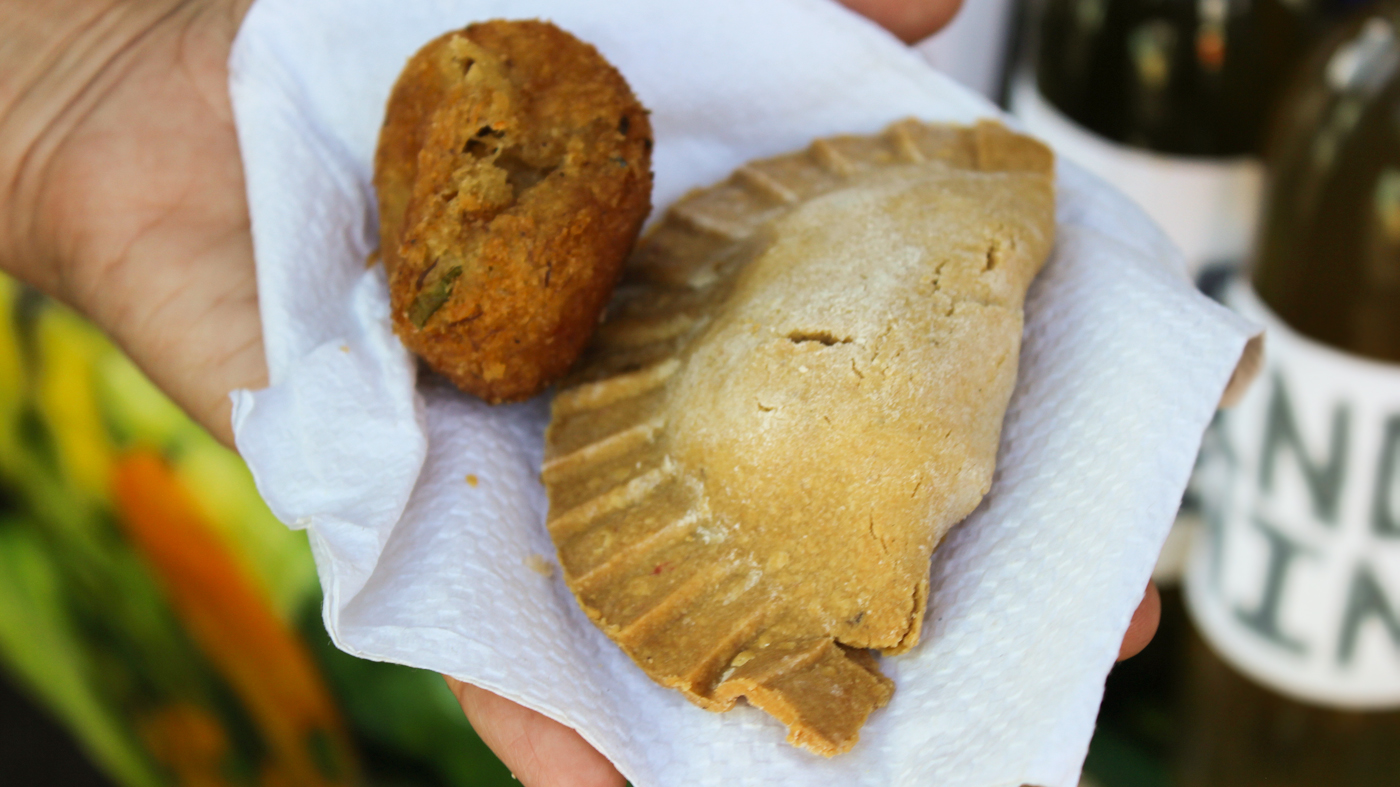

Plant Science &
Conservation
Garden Stories
Tracing breadfruit’s intriguing history

This is a Caribbean cultivar, Kashee, highly valued in Saint Vincent for cooking. Through genetic, historical, and morphological data, we were able to match this cultivar to the Tahitian cultivar, Puero, which has the same distinct spiky skin.
Breadfruit
If you visit almost any island in the Caribbean, you will likely come across a tree with big, glossy dark-green dissected leaves and large, greenish-yellow fruit the size of a cantaloupe. This fruit is known as breadfruit (Artocarpus altilis), named for its sweet bread-like taste when roasted, high starch content, and nutrients. It is considered one of the top priority species for food security.
Caribbean variety
The story of breadfruit (Artocarpus altilis) is tied to the infamous mutiny on the HMS Bounty in 1789—a failed attempt to introduce seedless breadfruit to the Caribbean. The Bounty’s captain, William Bligh, survived and, four years later, arrived in the Caribbean on another British ship, the HMS Providence. Bligh was charged with finishing the mission that the Bounty had started. But some important details of the valuable cargo, sapling breadfruit trees from Tahiti and Timor, had been lost to history—namely which varieties were actually introduced.
Chicago Botanic Garden, Northwestern University, and the St. Vincent Botanical Gardens—that traced five major lineages of Caribbean breadfruit back to that single introduction after Bligh docked the Providence in Kingstown in 1793, the main port of St. Vincent and the Grenadines.
Descendants of the original seedless breadfruit trees are thriving today, thanks to the Caribbean people who cared and propagated them for centuries. Our findings were published on January 23, the 230th anniversary of Bligh’s arrival in Saint Vincent, in the journal Current Biology.
I worked on this project with my advisor, Nyree Zerega, Ph.D, and other collaborators to trace the history of Caribbean breadfruit on the small island nation, Saint Vincent and the Grenadines in the Lesser Antilles. Dr. Zerega is director of the Chicago Botanic Garden’s joint graduate program in plant biology and conservation with Northwestern University. I was a graduate student in that program and an intern in Dr. Zerega’s laboratory when we did the research; now, I’m a lab manager at the Sackler Institute for Comparative Genomics at the American Museum of Natural History in New York City and a Ph.D. candidate at New York University.
Why breadfruit is important
These days, the Caribbean is one of the largest producers of breadfruit in the world. Breadfruit is a critical crop for food security, especially for island nations that are highly susceptible to climate change. Understanding and conserving breadfruit genetic diversity and geographical variation are important considerations for advancing its use, establishing fair access, and contributing to benefit sharing.

As an outsider conducting research in a country that was not my own, it was very important to me that the communities I was working with felt connected to the research, were included in all aspects, and felt there was reciprocity in the collaboration. Thus, with the guidance of our collaborators, we sought out and received a grant to provide a Farmers Cooperative with all the equipment necessary to process breadfruit into flour. This greatly extends the shelf life of breadfruit and increases economic opportunities for local farmers.
We studied breadfruit throughout Saint Vincent, sometimes in humid forest or alongside a road. Our field guide and collaborator was Erasto Robertson, a forest ranger at the Ministry of Agriculture and Fisheries. Sometimes, he scaled tall trees to reach leaves or fruits! Here, the Garden’s Dr. Nyree Zerega and Robertson had just hiked out of a forest valley.
The journey of breadfruit to the Caribbean and its transformation into a cultural staple is itself an odyssey. Breadfruit in the Caribbean is a consequence of the tragic history of slavery—the carbohydrate-rich fruit was used as a cheap food for enslaved people forced to work on British sugar plantations. However, Islanders have made it part of their culture, transforming its meaning.

Breadfruit is prepared in many ways.
Breadfruit is abundant in Saint Vincent and the Grenadines, where more cultivars are recognized than anywhere else in the Caribbean. In Saint Vincent, breadfruit is included in the national dish—blackfish and breadfruit. Its leaves line every skyline, the fruit sits in every street market, and the night is filled with the smell of roasting breadfruit on open fire pits.

